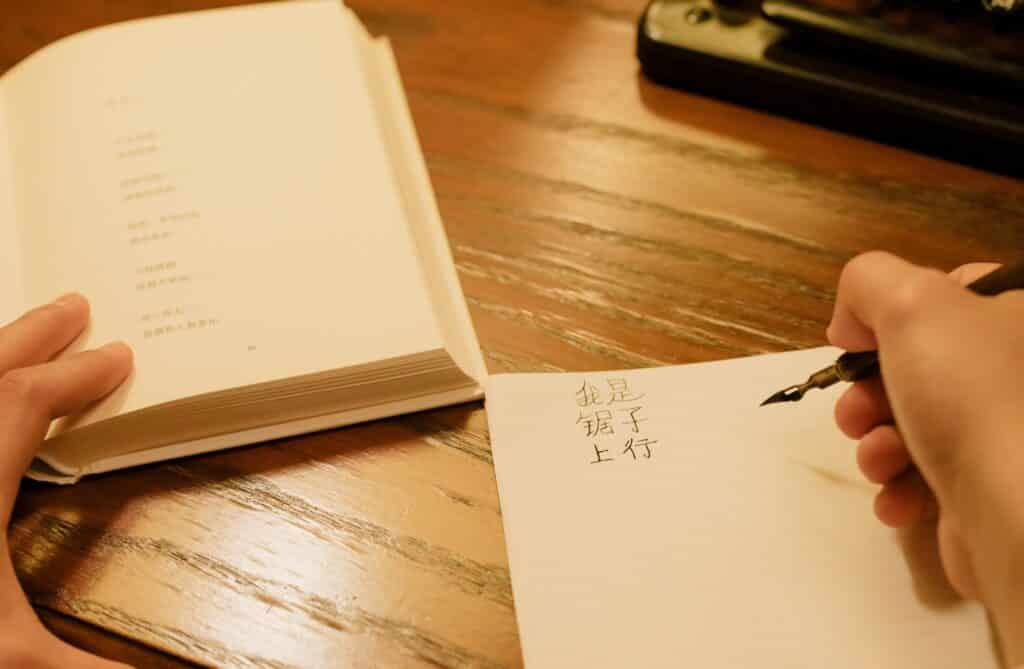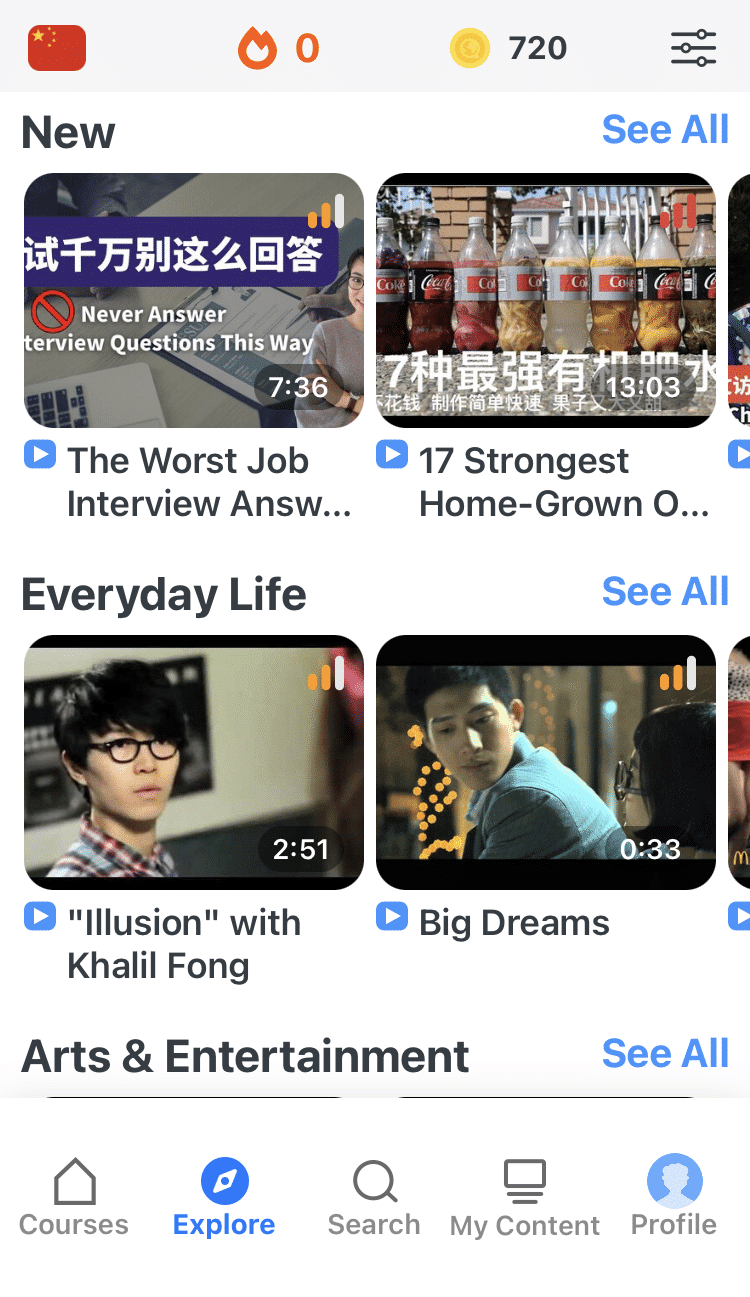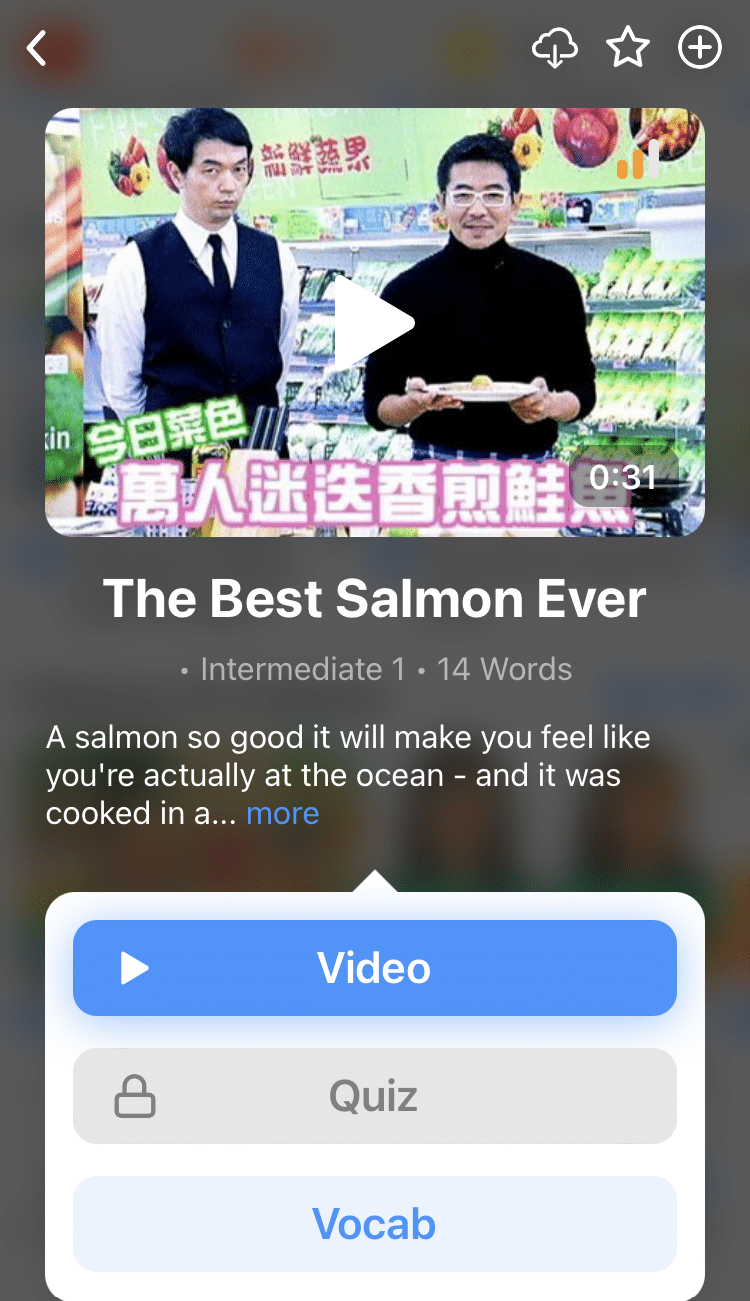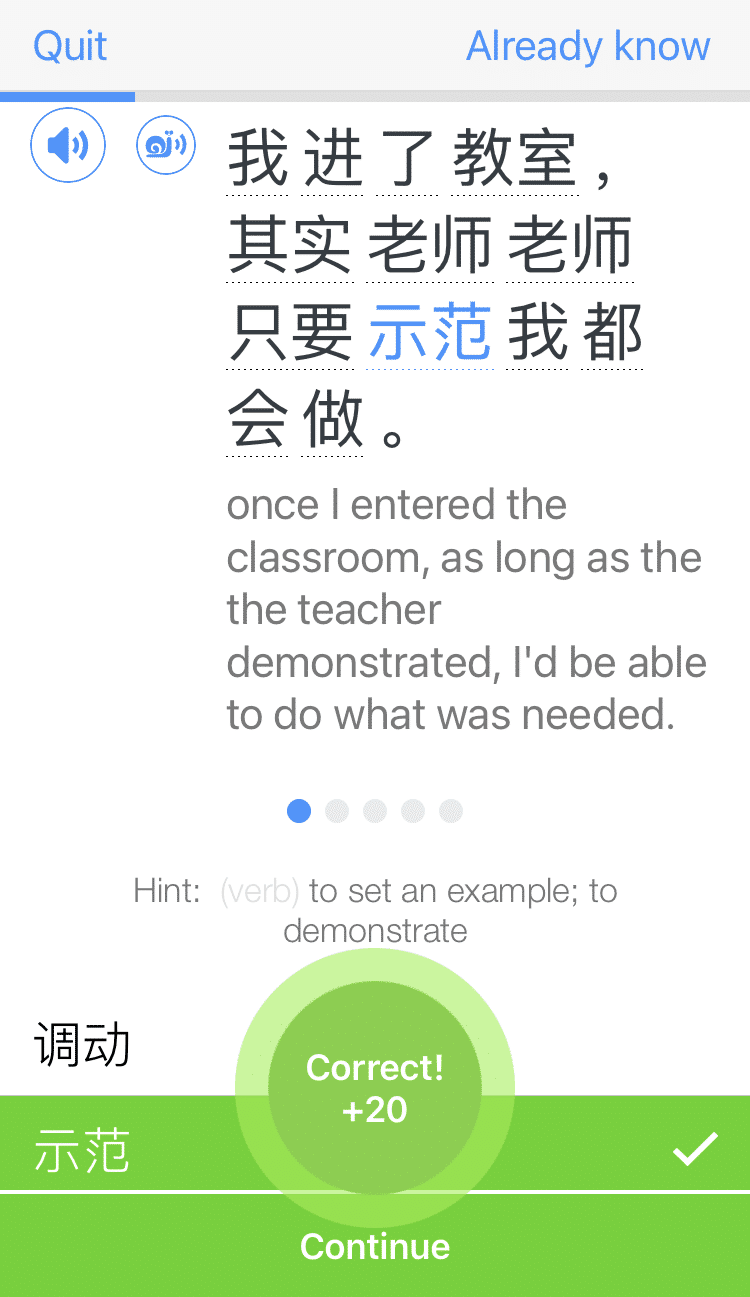
The Chinese Grammar Structures List for Beginners: 13 Patterns to Get You Started
Basic Chinese sentence structure follows the Subject-Verb-Object (SVO) pattern.
For example, we say 我爱你 (wǒ ài nǐ) — I love you in Chinese with the same sentence structure we would in English.
Although basic Chinese grammar is often described as simple because of this, there’s a lot of emphasis on word order (and using the right particles).
In this post, you’ll learn 13 grammar structures that will help you build more complex sentences than SVO structures and sound more natural.
Contents
- Common Chinese Grammar Structures for 的 (de) vs. 得 (de) vs. 地 (de)
- Common Chinese Grammar Patterns for 吗 (ma) vs. 吧 (ba) vs. 呢 (ne)
- Common Chinese Grammar Patterns for 会 (huì) vs. 能 (néng)
- Common Chinese Grammar Patterns for 想 (xiǎng) vs. 觉得 (jué de)
- Common Chinese Grammar Patterns for 了 (le)
- Resources for More Mandarin Chinese Grammar Structures
- And One More Thing...
Download: This blog post is available as a convenient and portable PDF that you can take anywhere. Click here to get a copy. (Download)
Common Chinese Grammar Structures for 的 (de) vs. 得 (de) vs. 地 (de)
They even sound the same! How can words be so similar, without meaning the same thing?
It boils down to these main differences:
- 的 is used with nouns to indicate possession or attach an adjective to a noun.
- 得 appears after verbs to describe the degree to which the action is done.
- 地 appears after adjectives and turns them into adverbs.
1. Noun + 的 + Noun
Possessive words (like my, your, her, his, our, their) don’t directly translate into one word in Chinese.
Instead, you add 的 to the end of the pronoun.
For example, 我 (wǒ) means “I” on its own, but you can make it possessive by adding 的.
我的书
(wǒ de shū.)
my book
2. Attribute + 的 + Noun
When 的 is used between an attribute and a noun, it gives the noun the attribute (or attaches an adjective to the noun).
漂亮的老师
(piào liang de lǎoshī.)
pretty teacher
3. Verb + 得 + State
The particle 得 is used after a verb and indicates effect, degree, possibility, etc.
飞得快
(fēi de kuài.)
to fly quickly
4. Adj + 地 + Verb
The particle 地 is mainly used as an adverb, like “-ly” in English. It’s used between an adjective and a verb.
For example:
慢慢地走
(màn màn de zǒu.)
to walk slowly
5. Adj + 地 + Adj
地 can also be used to modify an adjective.
特别地珍贵
(tè bié de zhēn guì.)
Particularly precious
Common Chinese Grammar Patterns for 吗 (ma) vs. 吧 (ba) vs. 呢 (ne)
So maybe your mind was blown when you first heard about question words—words that convert sentences into questions when they’re placed at the end of a sentence.
Now you have more question words than you know what to do with.
How should you distinguish between them?
In short:
- 吗 is for yes-no questions.
- 吧 is for making suggestions or requests.
- 呢 is for shifting the conversation to another topic or the other person.
6. Clause + 吗
It might be helpful to think of this as the equivalent of a question mark.
The answer to a 吗 question will always be yes or no (or to be more precise, confirm or negate the verb).
For example:
你会说中文吗?
(nǐ huì shuō zhōng wén ma?)
Can you speak Chinese?
7. Clause + 吧
Unlike 吗 or 呢, 吧 doesn’t always indicate a question.
It’s commonly used when making a suggestion or request. Much like “how about…” or “let’s…” in English.
However, you can also add it to the end of a statement, and it suggests that you’re seeking confirmation.
我们出去吃饭吧。
(wǒ men chū qù chī fàn ba.)
How about we go eat? / Let’s go eat.
8. Clause + 呢
呢 is a great way to shift the conversation to another topic or the other person.
Unlike 吗, answers to a 呢 question don’t have to be a simple “yes” or “no” and can be more open-ended. The English equivalent is “and…” or “and what about…”
For example:
我过得很好,你呢?
(wǒ guò de hěn hǎo, nǐ ne?)
I‘ve been well, and you?
Common Chinese Grammar Patterns for 会 (huì) vs. 能 (néng)
So 会 and 能 both mean “can,” but here’s how they’re different:
- 会 is for learned knowledge or the future.
- 能 is for physical ability and for indicating permission.
9. 会 + Verb
会 most commonly means “can” or “able to,” specifically for learned knowledge. Use it for acquired skills, not abilities that you were born with.
For example:
他会做饭。
(tā huì zuò fàn.)
He can cook.
会 is also often used to indicate a future action, like “will” in English.
你会去吗?
(nǐ huì qù ma?)
Will you go?
10. 能 + Verb
In many cases, 能 is very similar to 可以 (kě yǐ), which you can see in the examples below.
Use 能 to indicate that you’re physically able to do something or complete a task.
你能帮我一个忙吗?
(nǐ néng bāng wǒ yí gè máng ma?)
Can you do me a favor?
Unlike 会, 能 can also mean “be allowed to” or “do.”
在室内不能抽烟
(zài shì nèi bù néng chōu yān)
Do not smoke indoors
Common Chinese Grammar Patterns for 想 (xiǎng) vs. 觉得 (jué de)
想 and 觉得 both mean to think or feel, so what’s the difference?
- 想 is most commonly used to express that you want to do something casually.
- 觉得 is mainly used to express your opinion about something.
11. 想 + Verb
Use 想 when you feel like doing something.
我想吃东西。
(wǒ xiǎng chī dōng xi.)
I want to eat something. / I feel like eating something.
12. 觉得 + Verb
Use 觉得 when you’re expressing your opinion about something.
我觉得很好吃。
(wǒ jué de hěn hǎo chī.)
I think it tastes good.
Common Chinese Grammar Patterns for 了 (le)
Finally, we’re at 了, which might seem a little frustrating at first but is actually pretty simple once you understand the logic behind the grammar pattern.
了 is used to indicate the completion of an action or a change of circumstances.
13. Verb + 了
了 is mainly used in two situations.
First, it’s placed after a verb (or occasionally adjective) to indicate the completion of an action.
Usually, 了 indicates the past tense, but some instances indicate the expected completion of an action. In that case, it’s not necessarily past tense.
In English, it would be the equivalent of “when/after an action is finished.”
我吃了饭以后要出去。
(wǒ chī le fàn yǐ hòu yào chū qù.)
After I’m done eating, I want to go out.
Other than signaling the completion of a specific verb, 了 is also used to indicate a change of state or circumstance, also placed at the end of the sentence.
我饿了。
(wǒ è le.)
I’m hungry. (I wasn’t hungry before, but now I am.)
Resources for More Mandarin Chinese Grammar Structures
This post is just the tip of the iceberg regarding Chinese grammar. Practice is key to internalizing this list and other grammar concepts.
Here are my favorite resources:
- Chinese Grammar Wiki: This is by the one and only John Pasden and his consultancy, All Set Learning. 1,645 articles, carefully written and constantly growing. There are also books and courses available for purchase.
- FluentU Chinese: This is our web- and app-based language program with a vast collection of Chinese media clips.
- Chinese Grammar: This app is by Ninchanese and is specifically designed to address all grammar-related issues for every learning level. The lessons are available offline, making learning without an internet connection easier.
The sooner you start practicing, the better!
Download: This blog post is available as a convenient and portable PDF that you can take anywhere. Click here to get a copy. (Download)
And One More Thing...
If you want to continue learning Chinese with interactive and authentic Chinese content, then you'll love FluentU.
FluentU naturally eases you into learning Chinese language. Native Chinese content comes within reach, and you'll learn Chinese as it's spoken in real life.
FluentU has a wide range of contemporary videos—like dramas, TV shows, commercials and music videos.
FluentU brings these native Chinese videos within reach via interactive captions. You can tap on any word to instantly look it up. All words have carefully written definitions and examples that will help you understand how a word is used. Tap to add words you'd like to review to a vocab list.
FluentU's Learn Mode turns every video into a language learning lesson. You can always swipe left or right to see more examples for the word you're learning.
The best part is that FluentU always keeps track of your vocabulary. It customizes quizzes to focus on areas that need attention and reminds you when it’s time to review what you’ve learned. You have a 100% personalized experience.
Start using the FluentU website on your computer or tablet or, better yet, download the FluentU app from the iTunes or Google Play store. Click here to take advantage of our current sale! (Expires at the end of this month.)





